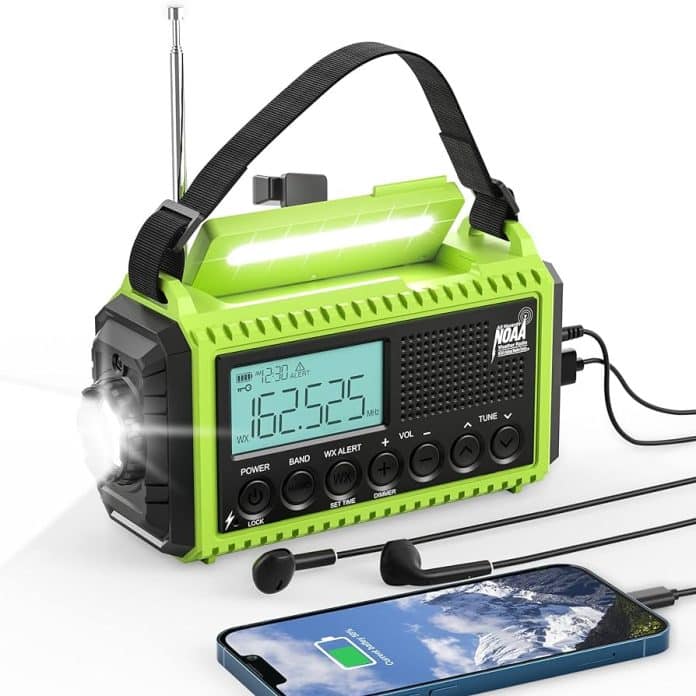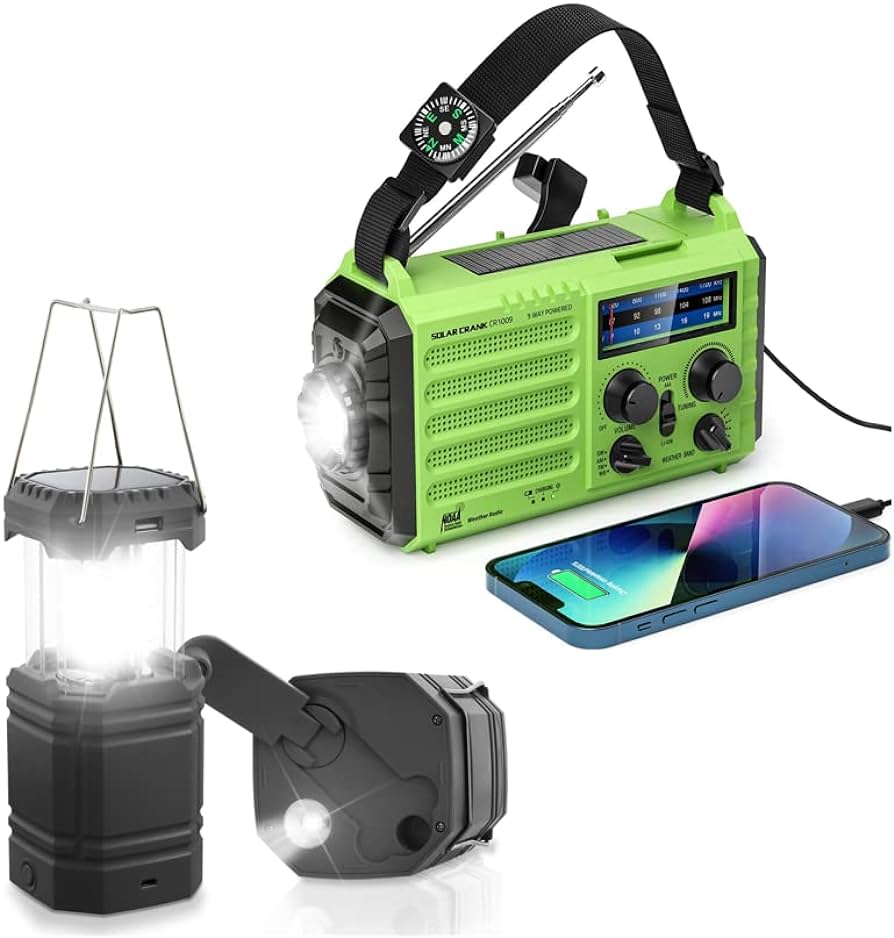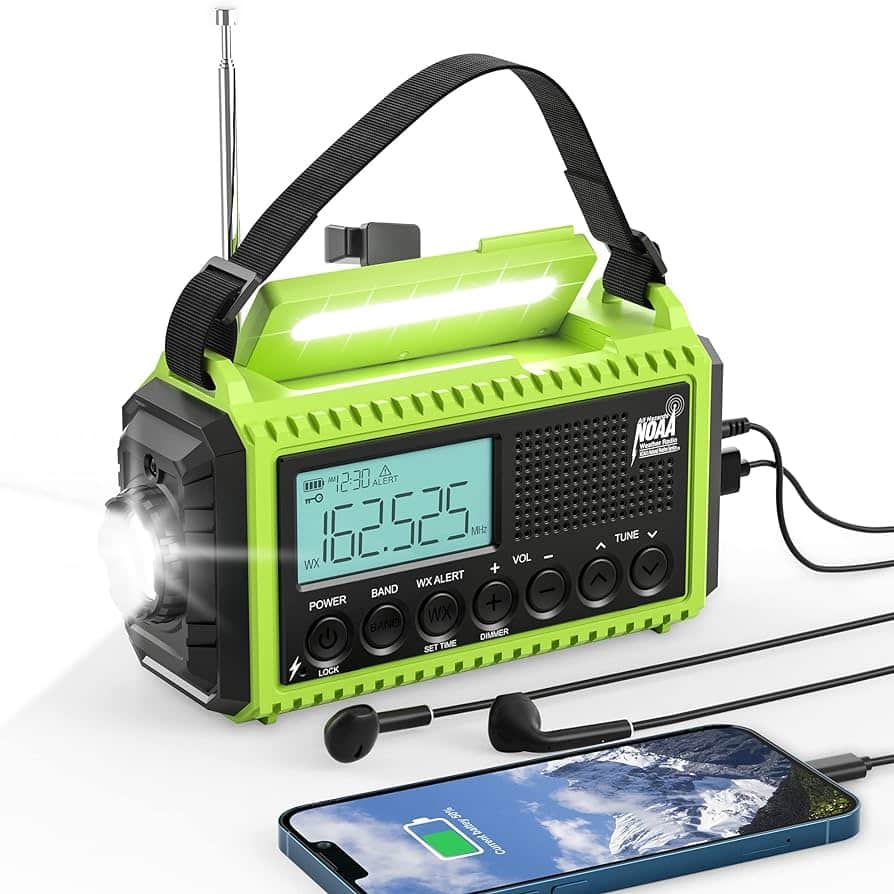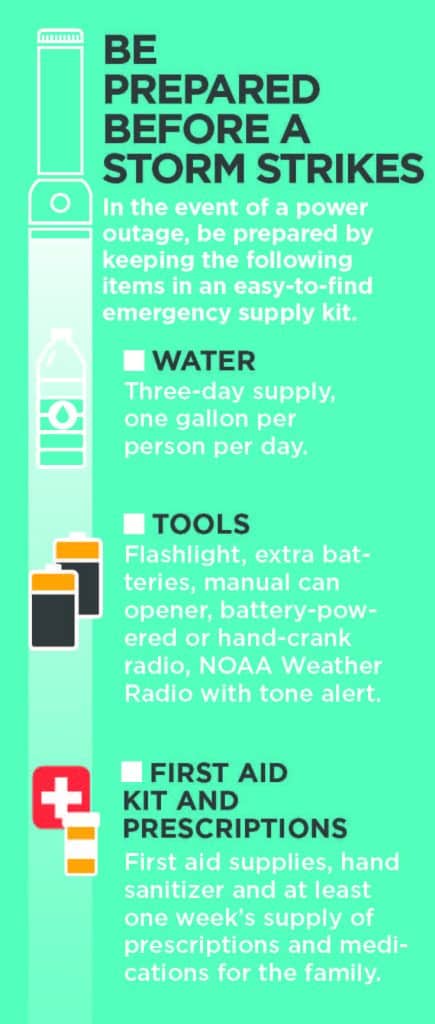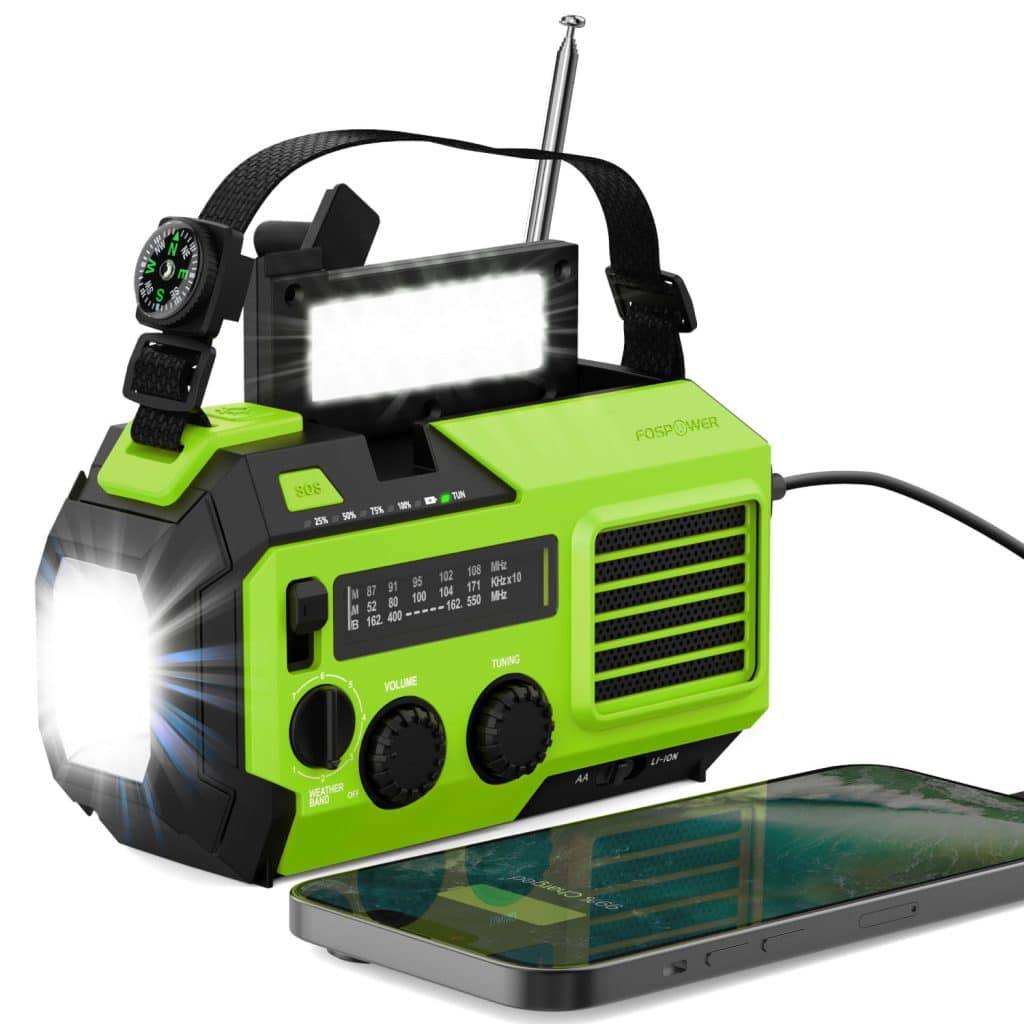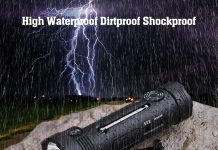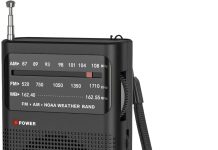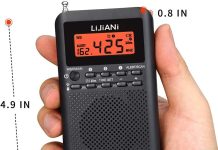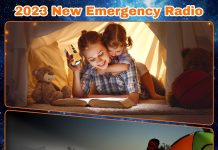During a power outage, staying connected to the latest weather updates becomes crucial for our safety. But how can we ensure that our weather radio continues to function despite the absence of electricity? In this article, we will explore some ingenious methods to power a weather radio during a power outage, allowing us to stay informed about severe weather conditions and take necessary precautions. From portable power sources to alternative energy options, we will uncover the most reliable solutions to keep our weather radio up and running when we need it the most.
This image is property of s.yimg.com.
Review contents
Using Batteries
Using disposable batteries
When it comes to powering a weather radio, one of the most common methods is using disposable batteries. These batteries are readily available and can be easily replaced when they run out of power. All you need to do is insert the batteries into the radio following the polarity markings. Disposable batteries are ideal for short-term usage or when you don’t have access to alternative power sources. It’s a good idea to keep a stock of spare batteries in case of emergencies.
Using rechargeable batteries
Another option for powering your weather radio is using rechargeable batteries. These batteries can be reused multiple times, making them a more sustainable and cost-effective choice in the long run. Rechargeable batteries can be charged using a battery charger, either through a wall outlet or a USB port. They are usually labeled with either a NiMH (Nickel Metal Hydride) or Li-ion (Lithium-ion) designation. Make sure to follow the manufacturer’s instructions for charging and using rechargeable batteries in your weather radio.
Choosing the right batteries
When choosing batteries for your weather radio, it’s important to consider factors such as battery life, power output, and compatibility with your radio. Look for batteries that have a longer shelf life and provide sufficient power to keep your radio running for an extended period. It’s also advisable to use batteries recommended by the manufacturer to ensure optimal performance. Additionally, consider the environmental impact of the batteries you choose. Opting for rechargeable batteries can help reduce waste and contribute to a greener lifestyle.
Using Solar Power
Using solar panels
Harnessing the power of the sun is an excellent alternative to traditional battery-powered weather radios. Solar panels convert sunlight into electricity, which can be used to charge your radio. Setting up a solar panel system requires a bit of investment, as you’ll need to purchase solar panels, a charge controller, and a battery bank. However, once everything is in place, you’ll have a reliable and renewable energy source. It’s important to position the solar panels in a spot that receives maximum sunlight throughout the day for optimal charging efficiency.
Using a solar power bank
If you don’t want to invest in a full solar panel system, another option is to use a solar power bank. These portable devices usually have built-in solar panels that can charge an internal battery. You can then connect your weather radio to the power bank to utilize solar energy. Solar power banks are more affordable and convenient for on-the-go and outdoor use. However, keep in mind that the charging capacity of solar power banks may vary, so it’s essential to choose one that matches your weather radio’s power requirements.
Using Hand Crank
Understanding hand crank radios
Hand crank radios are unique devices that offer an alternative power source for your weather radio. They have a built-in crank or handle, which can be manually rotated to generate power. As you crank the handle, it produces mechanical energy that is converted into electrical energy to charge the radio’s internal battery. Hand crank radios are particularly helpful during power outages or in remote areas where other power sources may not be accessible. They are also an environmentally-friendly option as they don’t rely on disposable batteries.
Using a hand crank radio
To use a hand crank radio, simply locate the crank or handle on the radio. Hold the radio securely and start rotating the crank in a clockwise or counterclockwise direction, depending on the manufacturer’s instructions. As you crank, you should feel some resistance, indicating that you are generating power. Make sure to crank at a consistent pace and follow any specific recommendations from the manufacturer. Some hand crank radios also feature a built-in solar panel, allowing you to combine solar and hand crank power for maximum efficiency.
Using Wind-up Charger
Exploring wind-up chargers
Similar to hand crank radios, wind-up chargers are devices that allow you to generate power manually. However, unlike hand crank radios, wind-up chargers are portable devices designed specifically for charging electronic devices, including weather radios. These chargers typically feature a hand crank or a built-in fan that rotates when exposed to wind. The rotation generates power, which can be used to charge the radio’s battery. Wind-up chargers are especially useful in outdoor settings where wind energy is readily available.
Charging the radio using a wind-up charger
To charge your weather radio using a wind-up charger, first, locate the charging port on your radio. It is usually labeled or indicated in the user manual. Connect the wind-up charger to the radio using the appropriate charging cable. If the wind-up charger has a hand crank, start rotating it in the designated direction. If the charger relies on wind energy, position it in an area with sufficient wind flow. Make sure to follow the manufacturer’s instructions for the recommended duration or number of rotations needed to charge your radio adequately.
This image is property of Amazon.com.
Using External Power Sources
Using a car charger
In situations where your regular power sources are unavailable, a car charger can come in handy to power your weather radio. Most weather radios offer the option to charge via a car charger, which plugs into the cigarette lighter or accessory socket of your vehicle. This allows you to utilize the car’s battery to charge or power the radio. Car chargers are particularly useful during outdoor activities like camping or road trips, as they provide a reliable power source while on the move. However, ensure that your car charger is compatible with your weather radio and follow any specific usage instructions.
Connecting to a generator
For prolonged power outages or emergencies, connecting your weather radio to a generator can be a reliable solution. Generators convert mechanical energy into electrical energy, providing a consistent power supply. To connect your weather radio to a generator, check the generator for outlets or compatible ports. Use the appropriate power cable and connect it to your radio. Ensure that the generator is placed in a safe and well-ventilated area before starting it. Generators can be noisy and produce carbon monoxide, so always adhere to safety guidelines when using them.
Using a power inverter
If you have access to a rechargeable battery or a larger power source like a boat or RV, using a power inverter allows you to power your weather radio. A power inverter converts DC (Direct Current) power from a battery into AC (Alternating Current) power that can be used by regular household devices. Connect the power inverter to your battery or power source, and then plug your weather radio into the AC outlet on the inverter. This method allows you to utilize the larger power source to keep your radio running when other options are limited.
Choosing a Weather Radio
Considering battery options
When choosing a weather radio, it’s essential to consider the battery options available. Some radios exclusively use disposable batteries, while others provide the flexibility of using rechargeable batteries or alternative power sources. Consider your needs and preferences regarding convenience, environmental impact, and long-term cost when selecting the battery type for your weather radio. Having the option to use different types of batteries or alternative power sources ensures that you can power your radio in various situations.
Evaluating power sources supported
In addition to battery options, it’s important to evaluate the power sources supported by your weather radio. Look for radios that can be powered by multiple sources, such as solar energy, hand crank, wind-up chargers, car chargers, generators, or power inverters. Having a radio that is compatible with various power sources increases your chances of staying connected during emergencies or power outages. Consider how portable and accessible the power sources are, as well as their reliability and sustainability.
This image is property of Amazon.com.
Preparing Ahead of Time
Stocking up on batteries
To be prepared for power outages or emergencies, it’s a smart idea to stock up on a sufficient supply of batteries. Whether you opt for disposable or rechargeable batteries, having extras on hand ensures that you can power your weather radio when needed. Consider creating a battery storage system or container to keep your batteries organized and easily accessible. Regularly check the expiration dates on disposable batteries and rotate them to avoid using expired ones. Remember to dispose of used batteries responsibly and recycle them whenever possible.
Maintaining a solar power setup
If you choose to use solar power as an alternative energy source for your weather radio, proper maintenance is crucial. Keep the solar panels clean and free from debris to ensure maximum efficiency. Check for any damage or signs of wear and tear, such as cracks or loose connections, and repair or replace as necessary. It’s also important to monitor and clean the charge controller and battery bank regularly. Following the manufacturer’s guidelines for maintenance and safety will help extend the lifespan and performance of your solar power setup.
Knowing where to find hand crank radios
In situations where power sources are limited or unavailable, hand crank radios can be invaluable. Take the time to research and identify reliable sources for hand crank radios in your area. This could include local electronics stores, outdoor retailers, or online marketplaces. Being aware of where to find hand crank radios in advance ensures that you can obtain one quickly when needed. Consider purchasing a hand crank radio well ahead of time and familiarize yourself with its functionality to be fully prepared for emergencies.
Using Alternative Communication Methods
Utilizing mobile apps and websites
In addition to weather radios, mobile apps and websites can provide valuable information and alerts during severe weather events. Downloading reliable weather apps on your smartphone or tablet allows you to access real-time weather updates, radar images, and emergency alerts. Additionally, websites maintained by meteorological organizations or local government agencies provide detailed forecasts and safety recommendations. It’s important to have a reliable internet or cellular data connection to ensure uninterrupted access to these communication platforms.
Using two-way radios
Two-way radios, also known as walkie-talkies, offer a convenient way to communicate during emergencies or when traditional means of communication are unavailable. They operate on a specific frequency band and allow direct communication between two or more radios within range. Two-way radios are especially useful when coordinating efforts with family members, neighbors, or emergency response teams. Before relying solely on two-way radios, make sure to check their battery life and range, and establish an agreed-upon communication plan with your contacts in advance.
Learning Morse code
Morse code is a communication method using a series of dots and dashes to represent letters and numbers. Learning Morse code can be a useful skill during emergencies when other communication methods fail. Many weather radios have a built-in Morse code function for sending and receiving messages. By familiarizing yourself with Morse code, you can effectively communicate essential information and distress signals using your weather radio’s Morse code feature. Several online resources and mobile apps provide interactive learning tools to help you master Morse code.
This image is property of www.victoryelectric.net.
Ensuring Proper Radio Usage
Checking for signal reception
To ensure that your weather radio is functioning optimally, regularly check for signal reception. Position your radio in an area with the strongest signal strength to obtain the most accurate and up-to-date weather information. If you’re using an external antenna, ensure that it is properly connected and adjusted for maximum reception. Obstructions such as buildings, trees, or mountains can block or weaken radio signals, so adjusting the radio’s position may be necessary. Continuous monitoring of signal reception allows you to stay informed and prepared for any weather-related developments.
Preserving battery life
To make the most out of your weather radio’s batteries, it’s important to implement energy-saving practices. Adjust the radio’s settings to optimize battery life, such as lowering the volume or minimizing screen backlighting. Consider using headphones instead of the built-in speaker to further conserve battery power. Additionally, if your weather radio has an automatic alert function, activate it to ensure that the radio only turns on during severe weather alerts, preserving battery life during periods of inactivity.
Staying updated with weather alerts
Keeping yourself informed about weather alerts and updates is crucial for your safety and preparedness. Regularly tune in to weather radio broadcasts for the latest information and professional guidance. Ensure that your weather radio is set to receive specific alerts that are relevant to your location and preferences. Some radios allow you to customize the types of alerts you wish to receive, allowing you to tailor the information to your specific needs. By staying updated with weather alerts, you can take appropriate action and make informed decisions to protect yourself and your loved ones.
Conclusion
In conclusion, powering a weather radio during a power outage or emergency requires careful consideration of various options. From disposable and rechargeable batteries to solar power, hand crank radios, wind-up chargers, and external power sources like car chargers or generators, there are several methods available to ensure continuous operation. By understanding your weather radio’s battery options and evaluating supported power sources, you can select the most suitable approach for your needs. Preparing ahead of time by stocking up on batteries, maintaining a solar power setup, and knowing where to find hand crank radios plays a vital role in being prepared for emergencies. Additionally, considering alternative communication methods such as mobile apps, two-way radios, and learning Morse code can enhance your ability to stay connected and communicate effectively. Ensuring proper radio usage, including checking for signal reception, preserving battery life, and staying updated with weather alerts, further contributes to a successful weather radio experience. By utilizing these strategies and being well-prepared, you can navigate power outages and stay informed during severe weather events with confidence and peace of mind.
This image is property of i5.walmartimages.com.

